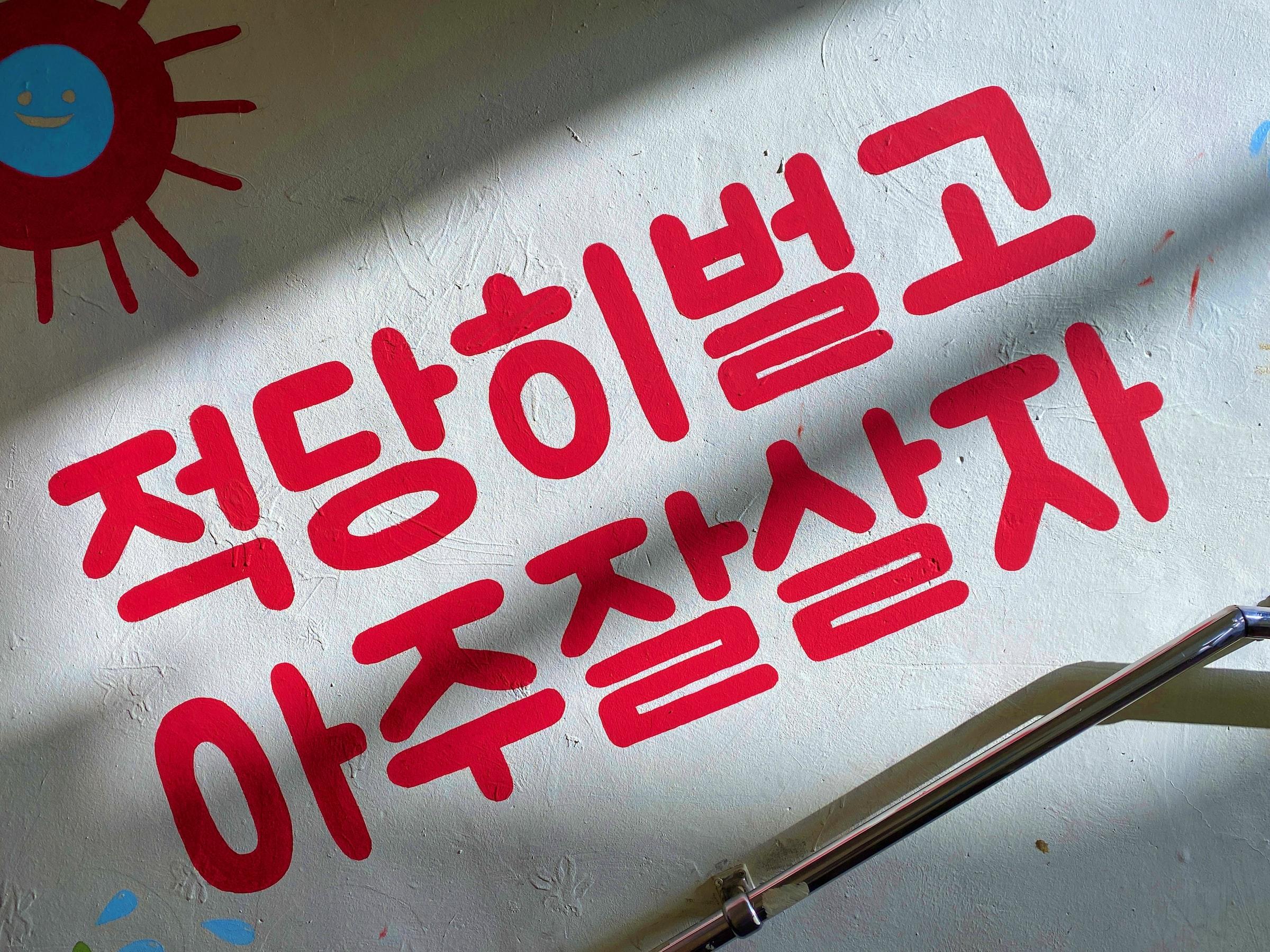Before 1443, the Chinese system was used to write and read the Korean language. And, unfortunately, at that time, only the nobles could read and write, the rest of the population was illiterate.
What was the solution? The Korean alphabet, called hangul, was invented to enable the entire population to have access to reading and writing. However, it's worth stating that hangul was unpopular in its early days and mainly used by women and children, the Korean alphabet only became official in 1948, after the defeat of the Japanese at the end of World War II.
At first glance, the overabundance of square characters may seem complex to learn. However, it is quite easy to learn the Korean alphabet in just a few hours. How's that? Without further delay, in today's article, let's consider 10 tips to learn all Korean learners learn the letters more efficiently.

1: Understand the Logic of Hangul
Alike the Latin alphabet, Korean uses vowels and consonants such as the following:
- 10 basic vowels: ㅏㅑㅓㅕㅗㅛㅜㅠㅡㅣ
- 11 compound vowels: ㅐ ㅒ ㅔ ㅖ ㅘ ㅝ ㅢ ㅙ ㅟ ㅚ ㅞ
- 14 consonants: ㄱㄴㄷㄹㅁㅂㅅㅇㅈㅊㅋㅌㅍㅎ
- 5 double consonants: ㄲ ㄸ ㅃ ㅆ ㅉ
- 11 compound consonants: ㄳ ㄵ ㄶ ㄺ ㄻ ㄼ ㄽ ㄾ ㄿ ㅀ ㅄ
To create words that are understood, letters combine and write inside squares. To form a syllable, much like in French, or other Romance languages, you need at least one consonant and one vowel.
Here's a tip within a tip, ensure that you've spotted two types of vowels visually:
- Horizontal vowels: ㅗ ㅛ ㅜ ㅠ ㅡ
- Vertical vowels: ㅏ ㅑ ㅓ ㅕ ㅣ
To write a word, we start with the initial consonant and then the vowel is added to the right if it is a vertical vowel, below if it is a horizontal vowel. If there are other consonants, just add them below. The words are therefore written on one, two or three lines.
2: Learn the Pronunciation of Basic Korean Vowels

Unlike other Asian languages such as Chinese, Korean is not as to pronounce. We recommend starting by knowing the pronunciation of the different Korean vowels. Here's a list of how basic Korean vowels sound phonetically:
- ㅏ: [a] A as in the word have,
- ㅓ: [ɔ] as in the chest, this is an open O, often marked EO in transcription,
- ㅣ: [i] as in here,
- ㅗ: [ô] as in top. It is a closed O. To remind you, you may notice that part of the letter is pointing up,
- ㅜ: [u] as in where (not to be confused with the French t),
- ㅡ: [ø] as in-game, it is transcribed in EU.
While there are ten vowels in total, the first 6 are the most important.
3: Learn Compound Vowels
The compound vowels are formed from the basic vowels, so you won't have to learn much more than that. Here are a few examples of compound vowels:
- ㅐ is composed of the letters ㅏ and ㅣ: it is pronounced [ɛ] like the grave accent in French in father
- ㅔ is composed of the letters ㅓ and ㅣ: it is also pronounced [ɛ]
- ㅒ: by adding a dash, we add the sound [i] so the letter will be pronounced yè [iɛ] like the English yeah
- ㅖ: same for this letter
- ㅘ is composed of the letters ㅗ and ㅏ: it is simply pronounced WA [wa] as in what,
Also, the combination of ㅜ and ㅣ gives ㅟ which is pronounced WI [wi] as in the Nintendo Wii! These are just a few examples to keep track of as a beginner. Consult with your Korean tutor to know how each compound vowel should be correctly pronounced.
4: Practice Speaking Korean Vowels Out Loud
Now that we've briefly consulted in the three previous tips all the vowels in the Korean alphabet, you'll need to practice pronouncing them regularly. How can this be done successfully? By watching YouTube videos of native Korean speakers who have experience teaching English speakers the mastery of vowel pronunciation.

5: Learn the Basic Consonants
Aren't there a lot of consonants and doesn't it sound daunting to learn them all so quickly? Absolutely! But, the trick is identifying them and breaking them down. Let's take a look at the following list of Korean consonants:
- ㅇ: at the beginning of the word, it is silent but at the end of the word, it is pronounced ng as in gong,
- ㄱ: this letter is pronounced by touching the front of the palate with your tongue,
- ㄴ: the equivalent of an English word that starts with N,
- ㄷ: a letter that creates a sound by touching the tongue with the front of the palate,
- ㄹ: the pronunciation requires the tongue to touch the back of the palate,
- ㅁ: the equivalent of a word starting with an M,
- ㅂ: between a [b] and a French [p]
- ㅅ: pronounced shi [ʃi],
- ㅎ: it is the English aspirated h as in hat,
- ㅈ is pronounced dj as in Djadja,
- ㅋ this consonant is pronounced like an expired [k],
- ㅌ is pronounced like an expired [t],
- ㅊ is pronounced tch [tʃ] like cha-cha-cha!
- ㅍ is pronounced like an expired [p].
6: Memorize the Double Consonants ASAP
Double consonants are formed from the basic consonants that we briefly reviewed in the previous subheading and the following are some examples:
- ㅃ is pronounced like [p] as in papa,
- ㅉ is pronounced tch [tʃ] as in Italian ciao,
- ㄸ is pronounced like an English word with the letter (t),
- ㅆ pronounced in Korean like "sh",
- ㄲ is pronounced like a real [k] as in karate.
Master the pronunciation of these double consonants and you'll be golden!
7: Take Time to Assemble Sounds and Letters that are Similar

Collect the letters and sounds that sound alike and practice pronouncing them:
- ㄱㅋㄲ
- ㄷㅌㄸ
- ㅂㅍㅃ
- ㅈㅊㅉ
- ㅅㅆ
- ㅐ ㅔ
- ㅒㅖ
- ㅞㅙㅚ
Are you confused by some of the previously mentioned Korean characters? Ask your Korean tutor for additional assistance on this matter.
8: Write Down Korean Letters to Memorise
Do you remember when you learned the English alphabet as a child? Well, it's important to state that memorising the Korean alphabet is quite the same: it helps to write the different letters down. We recommend having a dedicated notebook that is reserved for writing down Korean vowels and consonants.
Along with the Korean hangul character, write how it sounds in English and a sentence that will help you remember it correctly.
9: Start By Reading Simple Words in Korean
Before you can begin to read and write in Korean, the alphabet is the first step. Once you think you've mastered the Korean alphabet, it's time to face reality and try reading simple words in Korean.
We recommend starting small with a few words such as the following:
- 모자 (hat)
- 개 (dog)
- 차 (car)
- 좋은 아침이에요 (good morning)
- 감사합니다 (thank you)
- 먹다 (eat)
Recognising and being able to correctly pronounce Korean words whilst at home in England will successfully equip you for your next trip to the South Korean capital of Seoul where there are illuminated signs written in Korean everywhere!
10: Take it Step by Step

Last but certainly not least, is the ever-important tip of taking things step by step. For instance, when learning Korean you're running a marathon not a 100m dash. Therefore, you have to calm down and recognise that good things take time yet they are attainable through hard work and diligence.
We highly recommend that you apply tips one through nine, to quietly, yet effectively, learn the Korean alphabet in one day.
In conclusion, even if you managed to understand Hangul in a day, it's a safe bet that you will have to come back to it a few times during a week to memorize it well and not make any significant mistakes that could stunt your overall progress. So, what for what are you waiting? Start studying the Korean hangul today!















